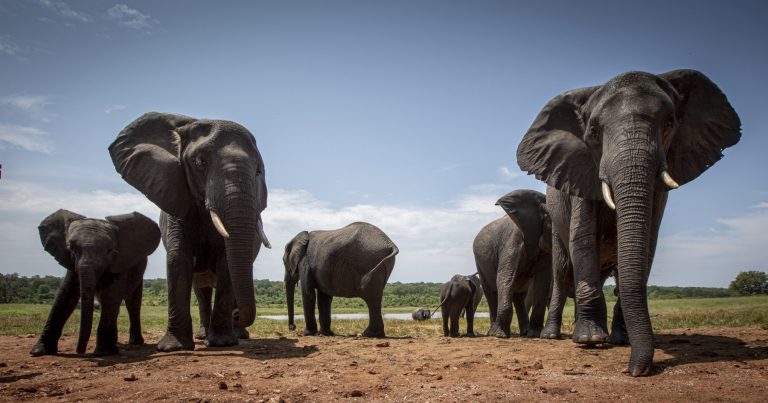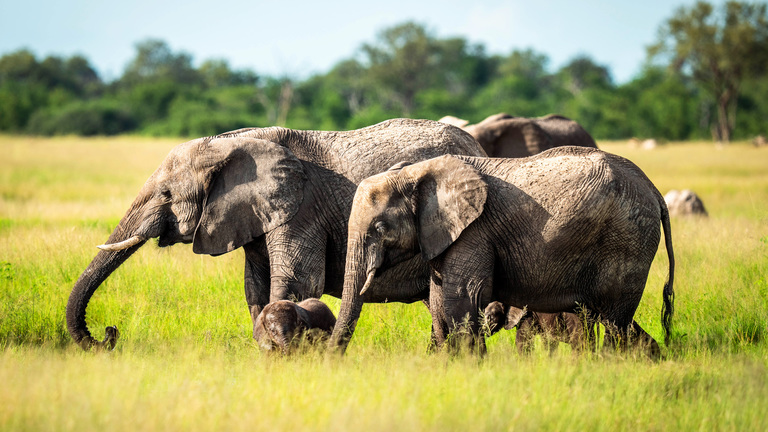
Elephants are very unpredictable and should always be approached with caution.
Two videos surfaced on WhatsApp recently showing how dangerous and strong an elephant can be.
A lot of people on holiday will include a visit to our national parks, especially the Kruger National Park (KNP) as it is big and easily accessible.
Nearly every visitor to the KNP will encounter an elephant or a herd of elephants. Both pose their dangers as single elephants are mostly males and large herds nearly always have small elephants with them. Bull elephants sometimes form a small group as they forage through the bush.
In this article, we will give a little insight into the world of Elephants and how to be safe around them during your next KNP visit
Elephants can be incredibly aggressive towards humans in a variety of circumstances. Apart from male elephants during musth, female elephants may become more aggressive after giving birth or having a calf born within the herd. Because elephants are so family-oriented and intelligent, they are protective of one another. They will especially protect any herd member that is at risk due to illness, size, or age.
With that said, when observing an average herd of wild elephants on safari, you’re in little to no danger provided that you keep a safe distance and observe the surrounding areas. There are also several danger signs to observe.
You can keep yourself safe from elephant attacks by always keeping a safe distance from elephants, steering clear of male elephants as much as possible, and learning more about elephant body language so you can predict their movements.
The following post was done on the Thornybush Web Page. Read the original post HERE and browse their webpage
Elephant Body Language and What It Means
Elephants are peaceful, gentle creatures most of the time, but they can be dangerous. Fortunately, it’s easy to tell when you are pushing your luck around elephants – their body language gives them away every time.
Here are some interesting facts about elephants that come from our experienced guides who know a whole lot more than we do about what’s happening in an elephant brain!
LOOK INTO THEIR EYES
Just as your eyes begin to droop after a fulfilling Sunday dinner – or snap wide open when you are startled, the elephant’s eye can indicate its state of mind. Soft, almost hooded eyes indicate a relaxed animal, while wide eyes can be a sign of trouble on the horizon. This is because the eyes widen as adrenaline seeps into the bloodstream – all the better to deal with danger quicker.
WATCH THE TAIL
When an elephant’s tail is softly swishing from side to side or occasionally swatting at flies, it usually means a relaxed state of mind. Add an element of tension to the picture and the elephant tail becomes more rigid, either held to the side or lifted away from the body. In most cases, an elephant showing anxiety in this way will move off to avoid conflict.

ELEPHANT EARS ALERT
Many people believe that an elephant flaps its ears as a sign of aggression. This is simply not true. Flapping ears are used to cool the animal down.
If an elephant turns towards you with its ears extended to the sides and head and trunk raised – different story. This intimidating display is an attempt to frighten you off. In most cases, the animal will continue on its way after giving you a scare, but this behaviour can lead to a charge should you choose to ignore it.
THE TRUNK POSITION
An elephant’s trunk has so many uses, that it almost never comes to a standstill. For communication purposes, it can be used as part of the domination display described above, or to trumpet a warning.
There are different theories about the way that an elephant holds its trunk during a charge. That’s not the kind of thing you should be worrying about. Mock charge or not, if an elephant gives any sign that it’s about to run towards you, your ranger will have you out of there before you have time to check for its trunk position.
LOOK, LISTEN AND LEARN
The warning signals versus communication given out by elephants are easy to tell apart, once you know what to look for.
A low rumble for example is merely the elephant communicating with the herd, while a trumpet is usually a signal of distress or a temper tantrum of a youngster whose mother will look to blame you for the outburst.
DON’T MISS THIS
The most important thing to remember while watching elephants on a game drive is to relax and immerse yourself in the experience.
Most of the elephants in Thornybush Private Game Reserve are used to people passing by and will simply continue with whatever they are doing. Take this opportunity to lap up the privilege of watching elephant behaviour in the wild and enjoy being in their presence.